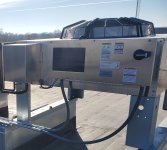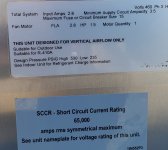wwhitney
Senior Member
- Location
- Berkeley, CA
- Occupation
- Retired
Seems to me that would depend a bit on the details of the built-in disconnect.In my view, you are still looking at a branch circuit. The "outlet" is where the premises wiring conductors attach to the built-in disconnect.
For example, if an installer of a roof-top HVAC unit bolts a separate fused disconnect to the side of the HVAC unit, and then runs a feeder to the disconnect, and runs a short branch circuit from the disconnect to the HVAC unit's terminals, that's all fine, right?
If instead the manufacturer will sell you the HVAC unit with that same fused disconnect bolted onto the side, and the same conductors preinstalled from the fused disconnect to the HVAC unit's terminals, the end result is identical. So you'd still have a branch circuit from the disconnect to the HVAC unit's terminals.
But that may not be what the OP has.
Cheers, Wayne



